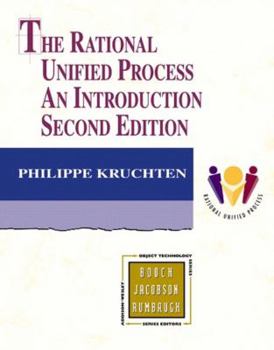The Rational Unified Process: An Introduction (2nd Edition)
(Part of the Addison-Wesley Object Technology Series Series)
Select Format
Select Condition 
Book Overview
The Rational Unified Process (RUP) is a saleable product from Rational/IBM.The RUP unifes the entire software development team and seeks to optimizethe productivity of each and every team member by... This description may be from another edition of this product.
Format:Paperback
Language:English
ISBN:0201707101
ISBN13:9780201707106
Release Date:March 2000
Publisher:Addison-Wesley Professional
Length:320 Pages
Weight:1.04 lbs.
Dimensions:9.2" x 0.5" x 7.1"












